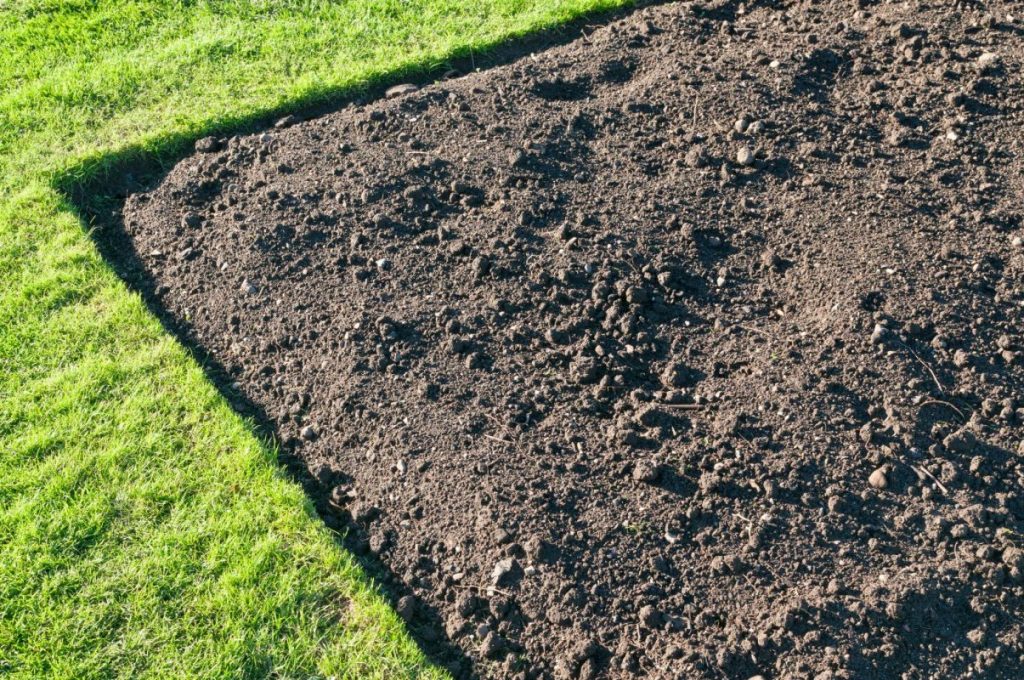As mentioned in our previous guide, topsoil is the uppermost layer of soil. High in organic matter and nutrients, it can be used for a wide range of purposes, from creating new lawns to making borders and flowerbeds. But how much of this soil do you need for the particular landscaping project you have in mind? Keep reading to find out.
How to calculate topsoil required
You’ll need a tape measure to work out how much of this soil you require. Start by measuring the length and width of the area in question in centimetres/metres. You will then have to decide on the depth of soil needed. The recommended depth of topsoil will depend on what you’re using it for. For example, you’ll need a deeper layer of this soil if you’re creating a vegetable patch than you would for a lawn. We provide further details of suggested soil depths later in this post.
Once you have these three measurements, you can calculate how many cubic metres of soil you need. To do this, simply multiply the length, width and depth together.
Typically, topsoil is sold by the litre. For example, at Ningbo we sell standard bulk bags of 750 litres and jumbo bulk bags of 1,000 litres. There are 1,000 litres in one cubic metre, so if you are trying to cover an area of four cubic metres, you would need four of our jumbo bags.
How much topsoil do I need for a new lawn?
If you are laying or planting a new lawn, you should aim to have a layer of topsoil no less than 10cm to 15cm deep. You may need more than 15cm if the quality of the existing soil is poor. If you’re not sure about the quality of the soil, take a look at its colour and consistency. If it is a rich brown colour and contains few stones, the quality should be OK. On the other hand, if it is pale, greyish or sandy and/or contains many stones, its quality is probably lower.
Once you have decided on the depth of topsoil you need for your particular patch of grass, simply multiply this figure by the length and width of the area to give you a figure in cubic metres, as outlined above. Then convert this number into litres by multiplying by a thousand. You will be able to work out how many bags of topsoil you need based on this figure.
How much topsoil do I need for a vegetable patch?
Vegetable patches typically require a thicker layer of topsoil than lawns, particularly if you plan to grow root vegetables. If you’re planting things such as carrots and potatoes, your topsoil should be at least 30-40cm deep. You may get away with 15-20cm if you are growing salad leaves, courgettes and other non-root vegetables. Again, the quality of the existing soil is a factor, so make sure you take this into account.
To work out the total amount of topsoil needed for your new vegetable patch, complete the calculation using the steps previously laid out.
How much topsoil do I need per square foot?
It is not very helpful to think in square feet when calculating topsoil, since as discussed earlier in this post, this soil is usually sold by the litre. If you’re measuring an area, it’s therefore best to do so in metres and centimetres, rather than feet and inches. If however you are working with a figure in square feet, it’s easy to convert into square metres. One square foot is just over 0.09 square metres (0.092903 metres to be precise).
So to determine how much topsoil you need per square foot, you need to multiply this figure by the depth of soil required and then multiply the total by 1,000 to get a figure in litres. For example, if you need a thickness of 40cm, you would calculate 0.092903 x 0.4 x 1,000, which equals just over 37 litres.
Being precise in your calculations by following the advice in this post will help to ensure you have enough topsoil for your project while also keeping costs to a minimum.





